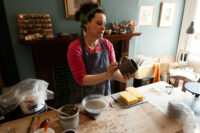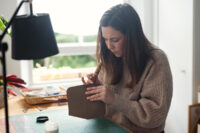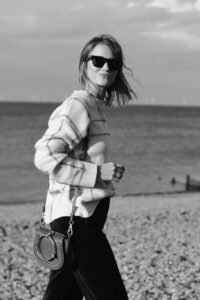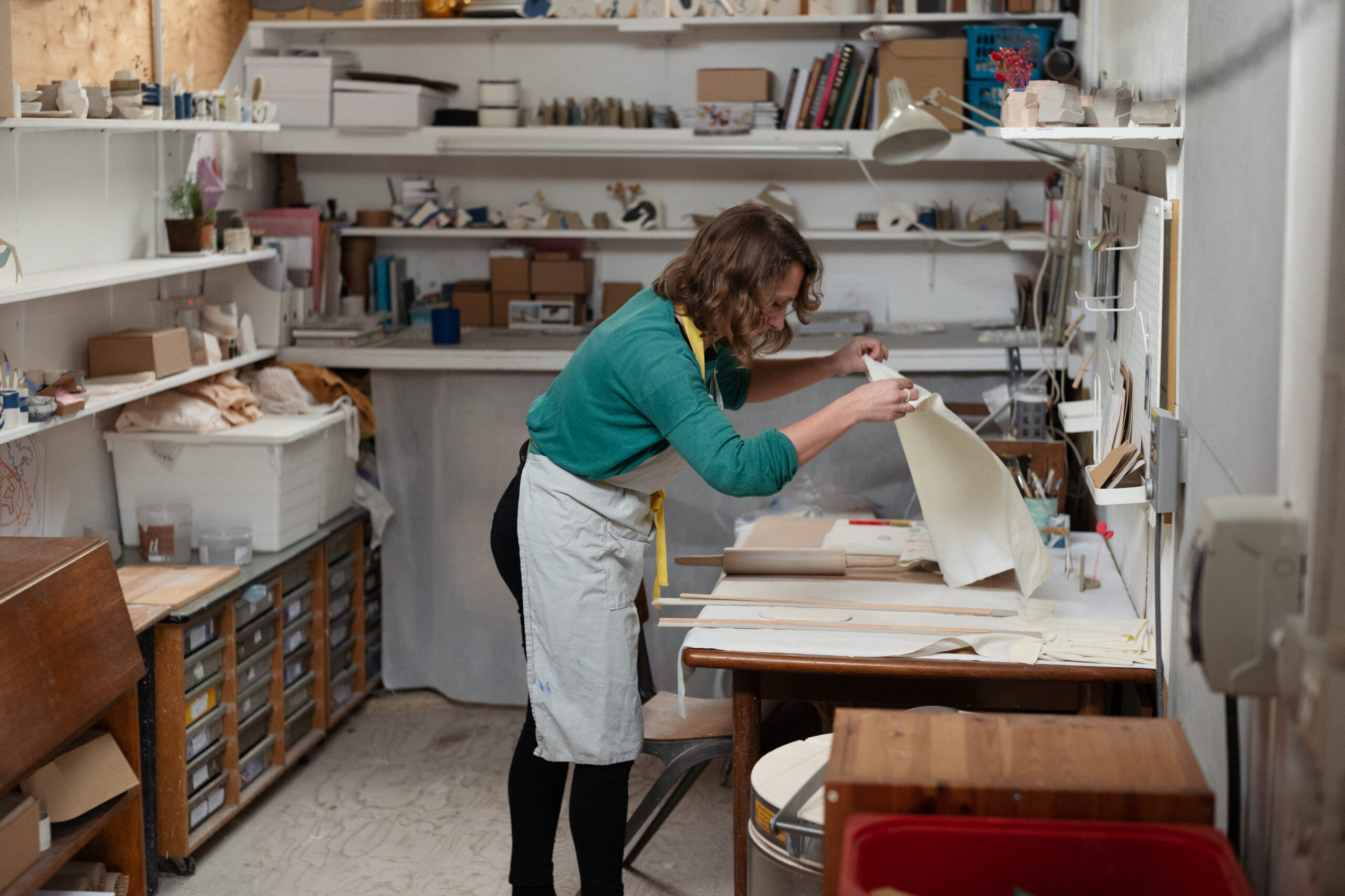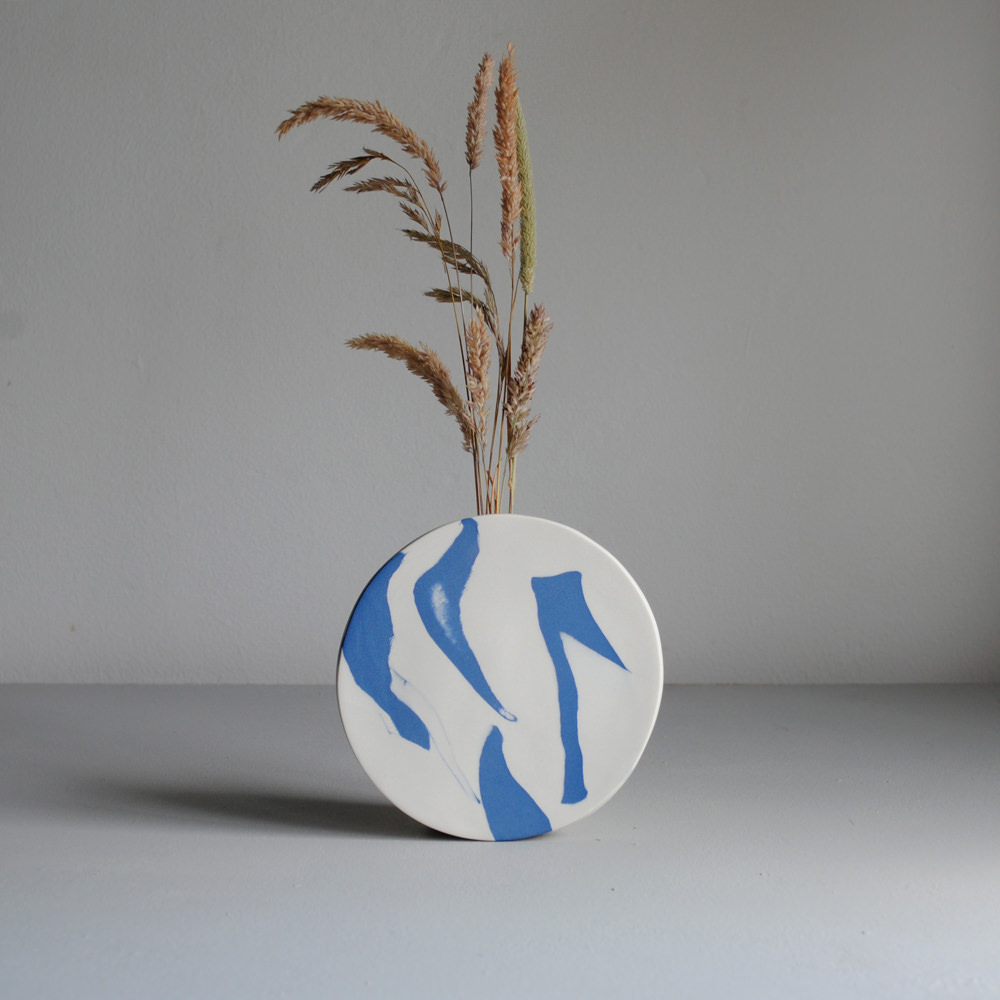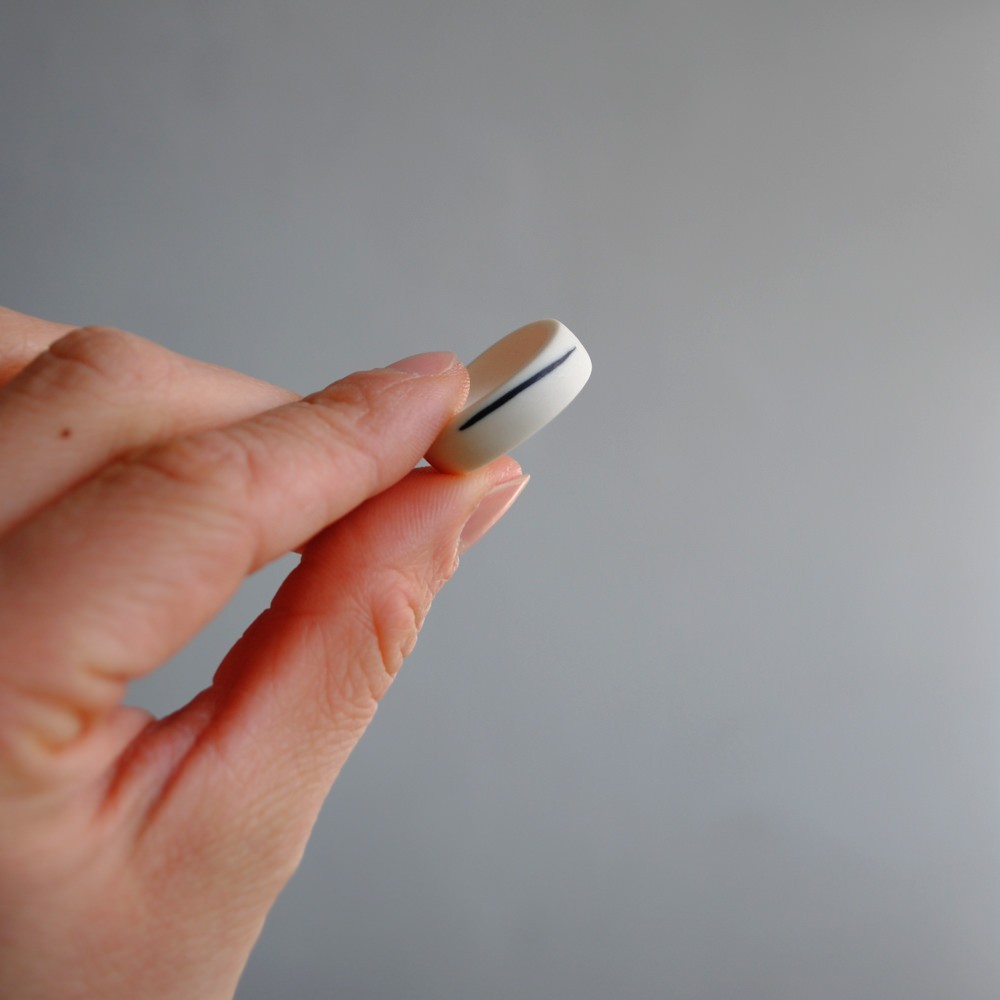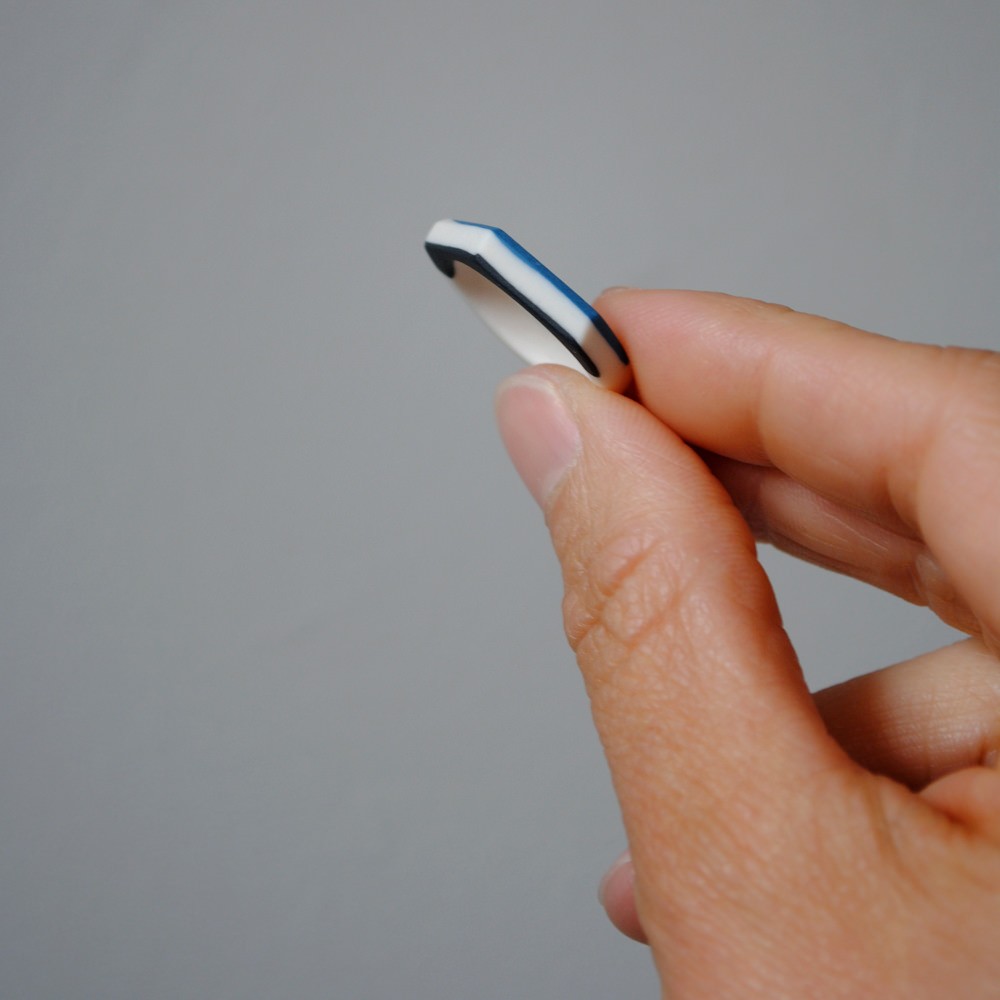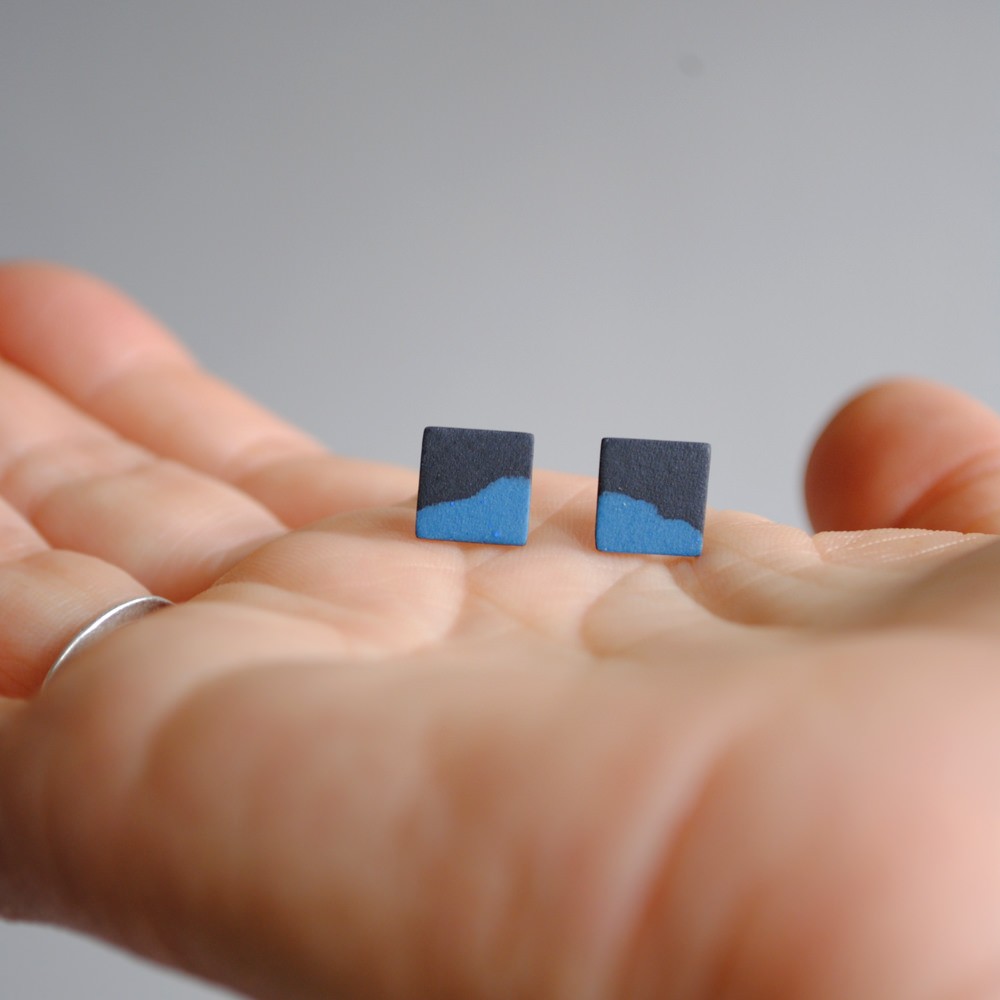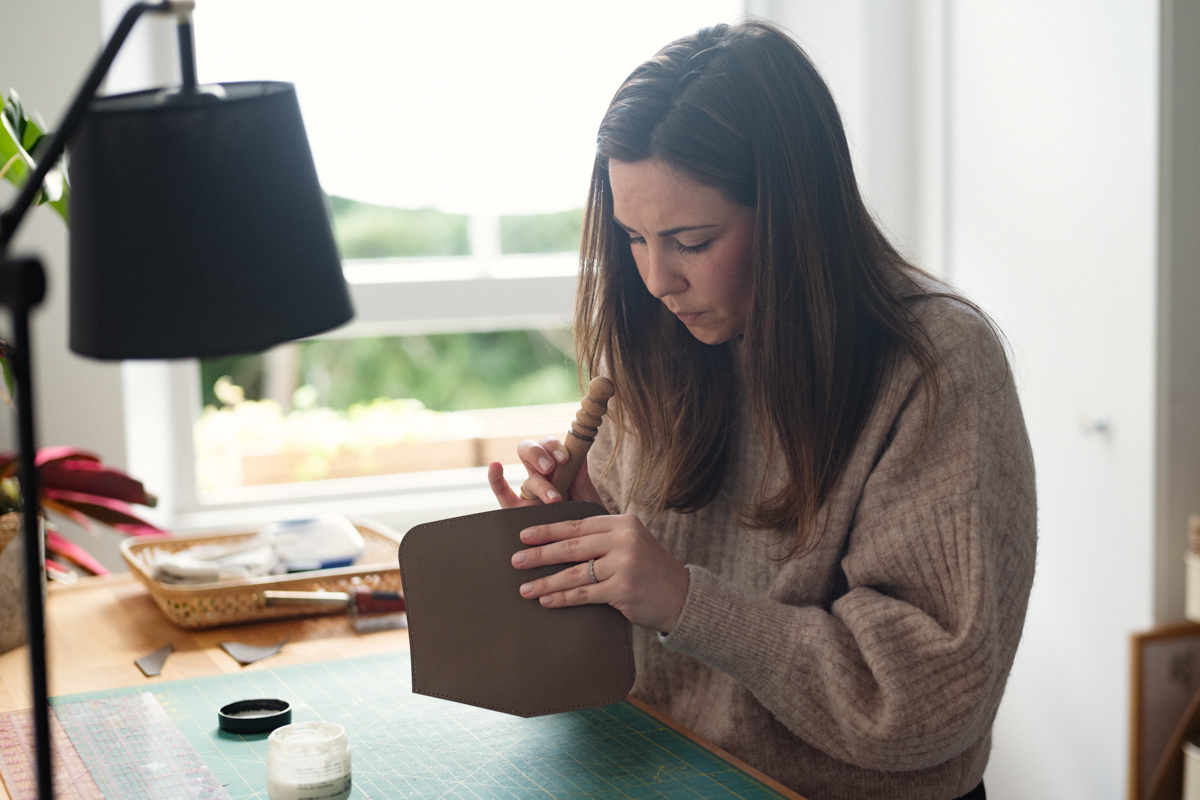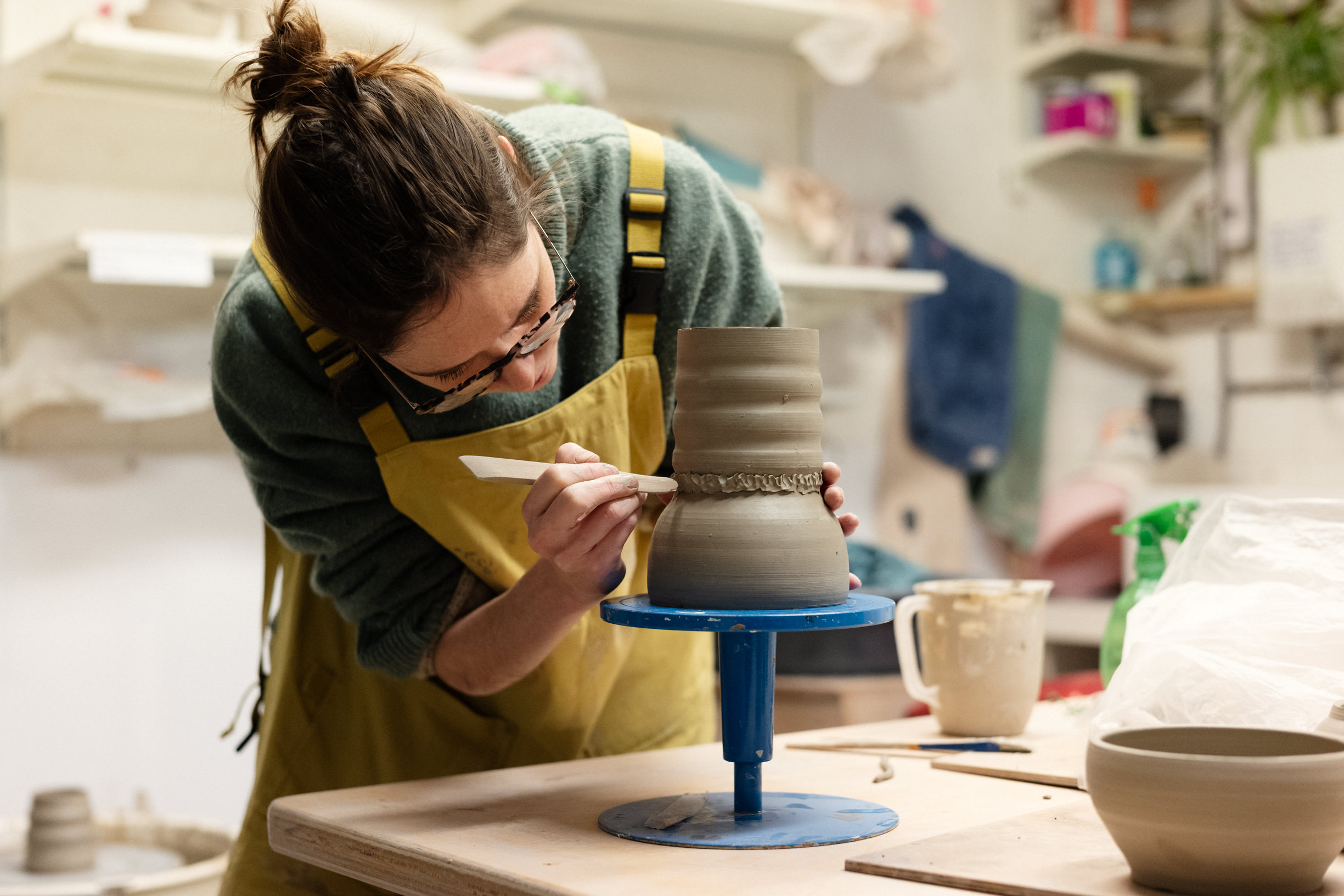Meet Emily Marston: An embodiment of creativity and an artist deeply connected to the natural and architectural world, Emily’s journey is a rich tapestry of experiences and inspirations. Before her passion-driven venture into ceramics, Emily’s contributions to the art world encompassed curating and advocating for early and mid-career artists through her Shop and Gallery in Oxford. Her background in Fine Art Painting has imbued her ceramic creations with a distinct touch – one that fuses colour, pattern, simple shapes, and clean lines. It’s this fine blend of aesthetic and functionality that gives life to her unique ceramic jewellery and vessels. This conversation delves deep into the heart and mind of Emily Marston – an artist whose love for clay serves not just as a medium of expression but also a grounding force. Drawing from her vast experiences, Emily paints a vivid picture of her creative process, making this a must-read for art enthusiasts and curious minds alike.
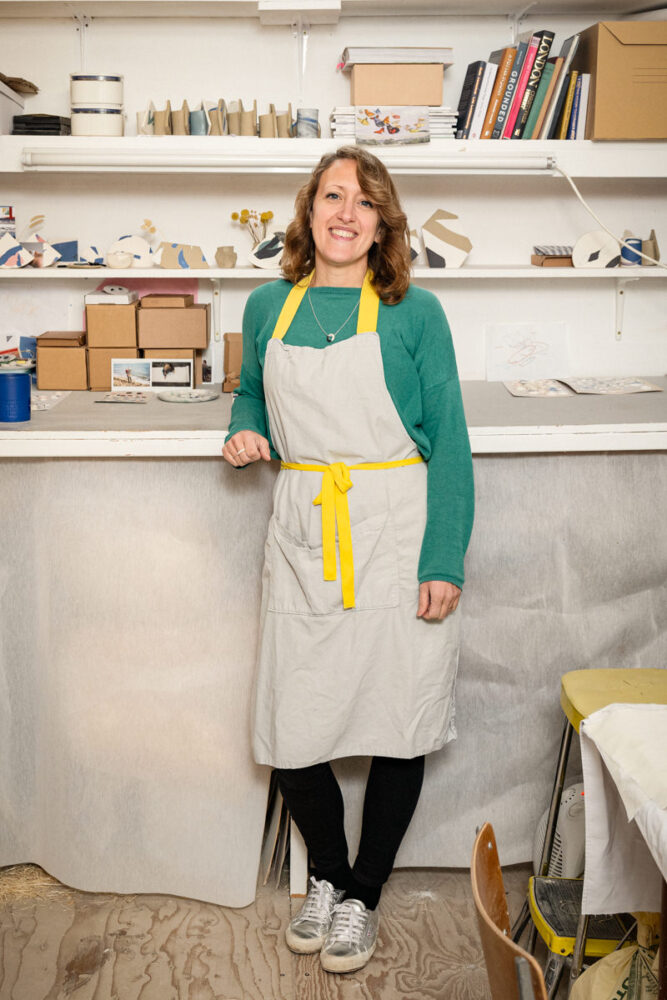
Emily Marston
I first starting working with clay about five years ago. I’d had a stretch of exhibition programming and curating after I graduated, both independently and as part of an arts centre in Oxford. My art practice had been on hold for a while, then a period of illness when my son was a toddler led me to pause the work I was doing and reset.
A friend suggested I make some pots with her at her home, and I fell in love with clay immediately. At this point, the link between creativity and wellbeing became really apparent to me and dedicating time to exploring ideas through clay was a real turning point. Working with a natural material like clay can really build resilience and it’s such a grounding material.
About a year later, I did my first makers markets, and my practice has been developing ever since. I’m mostly self-taught which has meant I’ve experimented and developed techniques along the way.
I still get excited finding new artists, and when I see places that could work as great exhibition spaces. I’d love to explore curating again alongside my practice at some point.
I see the fronts of the vases or any patterned areas as a blank canvas and with my shape vase collection it’s been really interesting to use a set of forms and explore the surface within this. The patterning process is very intuitive and I find that I can personally be much more free than I would if I was painting, as there is the remove between laying out patterns and the way in which they change and flow as I roll them out into a useable slab.
My paintings often focused on light and space and I find with ceramics I can think about this in another way – I found the ideas of flow and balance, and the contrasts I wanted to create really lent themselves to the three-dimensional form. I love being able to translate ideas into a functional object that can be used every day, but equally just be enjoyed as a standalone piece.
As soon as I started working in ceramics, I knew that I wanted to put the colour into the body of the clay to create patterns. Seeing the abundance of colours and patterns in nature – in our local landscape and even in our slightly wild garden surrounding the studio, it seems natural for these to find their way into my work.
There is a real joy in experimenting with layers of colour and how they work together to create a specific feel. Finding what works and what doesn’t is all part of this creative process.
I view each piece like an individual artwork and I love that people see different things in the abstract patterns. For my new collection of flower bowls, I see these being more varied in size and shape – led by the patterns I’ve created on the slab.
Sometimes an idea will pop into my head, then I’ll need to work out how to recreate it in clay, but I don’t always have a fully formed piece in mind when I start making a new design- it often develops as I’m making. If I ‘m looking at scale and how shapes work together I’ll make up a card maquette, but mostly I’ll start in clay. Any unfired clay tests can be slaked down and then recycled into useable clay again.
I can often have an idea for a specific object I’d like to make for a long time, for example flower display bowls have been in my head for a good few years! I have become more and more into gardening recently and I love exploring ways in which we can connect with nature – both by bringing nature into the home and by creating an object that evokes the natural world. I’ll keep coming back to ideas in my sketch book until I find an iteration that looks and feels right. Throughout this time, I’ll find I’ve been developing skills that enable me to create objects in a different way, so new possibilities open up as my practice evolves.
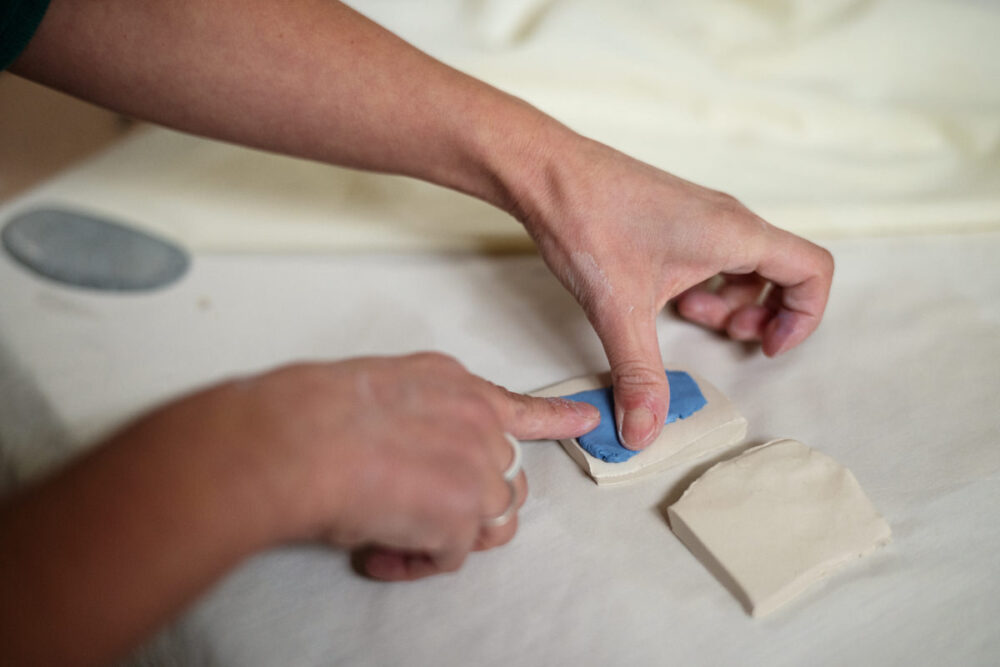
More recently, I’ll keep a word in my head as I’m experimenting with new ideas, coming back to this as an anchor. For example balance or flow. I find that it’s important to keep checking in whilst I’m making. I’ll often get an impulse to change something- a shape/colour or the way something is constructed and I’ll make more changes as I go along.
There’s then lots of testing and sometimes months of half-ideas before fully formed objects are made. I’ve learned to trust this slow process and embrace it as things fall into place.
I find I’m always looking for contrasting elements in nature, and also where architecture and nature meet. I love working with minimal forms and see them as a contrast against both the movement and flow of the patterns I create, as well as the flowers and leaves that the vases hold.
I’ve often been told that my work feels calming, and this could be owed to this simplicity of form too.
I’ll take lots of photographs when I’m outside on walks – I find that I’m always spotting and capturing contrasting elements and I’m drawn to expanses of sky and water too. I live close to the river and I’ll walk and cycle there as much as I can, drawing visual inspiration from the local landscape, and just from being near water.
I worked predominantly in photography towards the end of my degree, and it plays a big role in how I experiment with ideas and connect them together. I’ll often intuitively take photographs, then seeing them all together, I notice the relationship between them.
I’m drawn to strong architectural lines contrasting against leaves and trees, flowers peeking out from behind walls, layers of different flowers and foliage.
The objects I create often have a link to the natural world in the way in which they are used as well. Making vases and flower bowls has really encouraged me personally to think about the plants I’m growing, and bringing a few flowers in from the garden for my vases brings me a lot of joy.
In terms of light, this comes back to painting and photography, and thinking about an object spatially. When I’m creating an object, I’m also thinking about how it’s viewed, the shadows it creates and how this might change throughout a day or evening.
There are so many things. I love that I’m always learning something with ceramics, with every new design I have a better understanding of the material, and the possibilities of clay do feel endless.
I find that the material lends itself to experimentation – it’s easy to play with shapes and structures and slake the clay back down to use again. However, it’s important that once it’s fired, clay is such a long-lasting material and can be used for generations.
I also recently discovered that there was a Roman pottery close to our house and I find it fascinating that people were using clay here to make beautiful pots hundreds of years ago. I love that the material has been used for so many years so consistently.
Working with the earth is very grounding, and natural material such as clay has a memory. Especially with hand building, the form can move and change as it dries and as it’s fired. Once you put it into the kiln, you never quite know what’s going to happen and there’s an element of acceptance that comes with this, and a lot of letting go of perfectionism.
When I talk about being mindful in my practice, I’m also thinking of the way in which I use materials and the considered way in which I work. This is always a work in progress but in bringing new objects into the world I feel like it’s important to make in an intentional way.
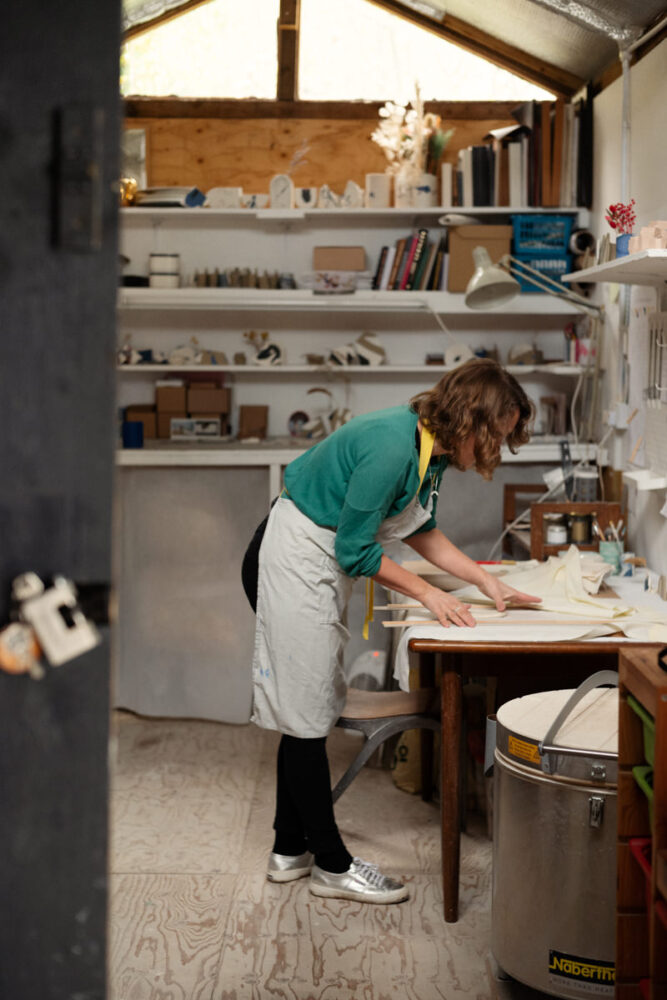
I’ve started to work again with Nerikomi- this is a traditional Japanese technique of layering coloured clay. It’s a very intricate process, and involves thinking in a different way from my other work in order to visualise how a pattern might come out as the slab is sliced and reformed. I’m starting to introduce this technique into my new collections.
I also took part in a workshop last year to learn how to make my own pigments from locally sourced soil and I’d love to use this to link specific pieces of work to locations. I’m still experimenting with this and looking forward to seeing how the idea develops.
Pieces will often have several maquettes and iterations until I settle on how something will work structurally, how well it will fire and how it can be used.
I always use and wear the ceramics I create so that I can be sure they work well. I’ll wear my jewellery daily and I live with vases around the house and experiment with dried and fresh flowers throughout the seasons.
It’s really important to me that my ceramics can be kept for generations, and that jewellery is comfortable for everyday wear, so testing is a really important part of the process.
I always have projects going on in the background, and notebooks full of ideas. I’m looking to explore a larger collection of flower display bowls, and I’ve been thinking about kinetic sculptures for a while – expanding on the theme of object and light. This is one of those that I keep coming back to and will hopefully be fully formed soon!
I’m also developing a series of workshops for both ceramic vessels and jewellery. I’d love for these to be relaxed workshops that focus on the grounding nature of using clay whilst creating an object to be worn, used or displayed.
I mentioned exploring creating my own pigments, and I’m also really curious about the possibilities of other avenues such as using wild clay and wood ash glazing too.


